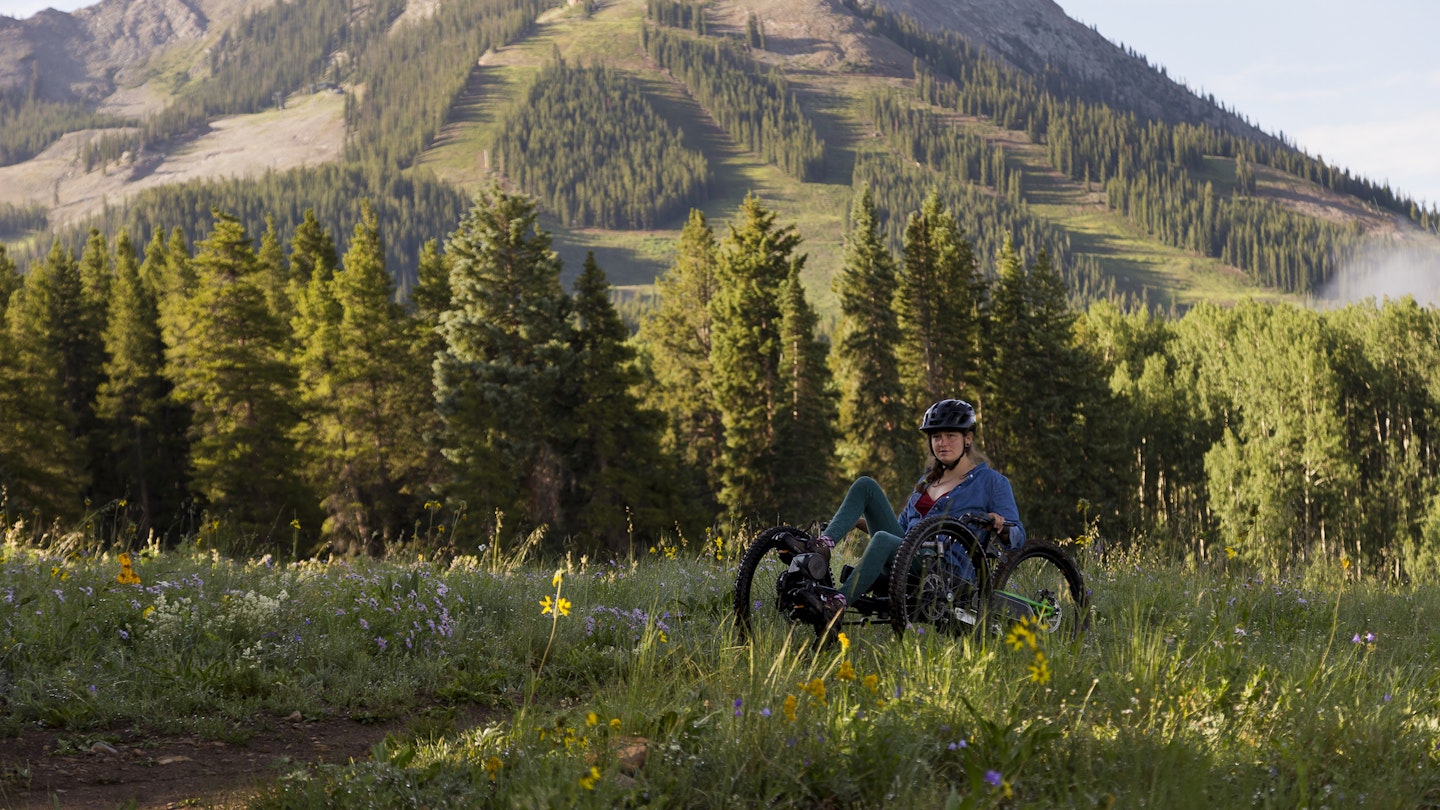Discover Accessible National Parks for Travelers with Disabilities
As national parks look for ways to better serve travelers with disabilities, here are the top parks doing it right.
Visitors entering Yellowstone, America’s first national park, pass under a columnar basalt arch from 1903 inscribed with the park’s purpose: “For the benefit and enjoyment of the people.” It’s a lofty promise of democratic ideals; one that many US parks failed to realize upon inception.
Since the founding of Yellowstone in 1872, a lack of accessible features often meant these public spaces excluded people with physical and cognitive disabilities. However, thanks to a modern movement prioritizing inclusion, dozens of destinations are bridging the divide. Today, accessibility is considered not an additional piece of park maintenance but an integrated component, says Jeremy Buzzell, Manager of the Park Accessibility for Visitors and Employees Program at the National Park Service (NPS).
In 2012, the NPS formed the Accessibility Task Force, which implemented a five-year plan to improve disability access by 2020. Numerous parks now provide adaptive equipment for those with mobility impairments, empowering travelers to explore once-off-limits landscapes. Moreover, some destinations offer sign language interpretation tours for the deaf or hard-of-hearing, tactile maps for visitors who are blind or have low vision, and sensory guides for travelers with cognitive disabilities. Nevertheless, significant barriers to inclusion still exist.
Understanding Accessibility Challenges
“One of our biggest challenges is figuring out how to resolve conflicts between what we’re trying to preserve while, at the same time, trying to provide access to it,” says Buzzell. For example, maintaining the Statue of Liberty’s 19th-century frame makes it unlikely there will ever be an accessible elevator to her crown.
These obstacles can make it tricky for disabled people to determine which national parks are worth exploring. Access opportunities vary from site to site, and when it comes to meeting access needs, there’s no one-size-fits-all solution. Consequently, travelers with disabilities are encouraged to research accessibility options and contact parks directly before visiting.
Cory Lee, an accessible travel blogger who uses a wheelchair, advises, “It’s very important to do as much research as possible before your trip. By researching ahead, you can save time once you’re actually there, and fully enjoy the park.”
Candy Harrington, founding editor of Emerging Horizons, recommends seeking in-depth descriptions of hiking trails, even if they are labeled “accessible.” An ADA symbol doesn’t always guarantee a trail meets everyone’s access needs. However, before diving into research, visitors must choose a destination; a daunting task with 428 official NPS sites. Thus, we’ve compiled a list of notable accessible national parks, ensuring everyone can experience the joys of nature.
Know Before You Go
Citizens and permanent residents with disabilities can apply for an Access Pass, granting entry to over 2000 federal recreation sites nationwide. The pass is free (with a nominal $10 processing fee) and includes access to national parks, wildlife refuges, and forests.
1. Yosemite National Park, California
Yosemite boasts stunning granite cliffs, towering sequoias, and breathtaking waterfalls, along with features that accommodate nearly every access need. Wheelchair users can easily navigate the park using accessible shuttles, which transport visitors to paved trailheads, including popular routes like Yosemite Falls and Bridalveil Fall.
Visitors can even rent handcycles in Yosemite Valley, allowing disabled athletes to enjoy the park’s relatively flat areas. For those with visual impairments, tactile models provide multisensory experiences at iconic overlooks, such as Tunnel View, offering views of renowned landmarks like El Capitan and Half Dome.
Yosemite’s commitment to accessibility began when it became the first NPS site to establish a deaf services coordinator, a position now responsible for overseeing comprehensive programming for the deaf and hard-of-hearing community.
2. Sleeping Bear Dunes National Seashore, Michigan
This 35-mile stretch of Michigan’s Gold Coast was once inaccessible to wheelchair users. In 2019, a local non-profit introduced track chairs—motorized chairs with treaded tracks—that allow those with mobility impairments to traverse rugged terrain.
Visitors can use track chairs on trails like the meadow-lined Bay View Trail or rent sand wheelchairs to explore dunes and beaches. Furthermore, an ADA-compliant dock on Loon Lake features an accessible canoe/kayak transfer-and-launch system.
3. Sequoia and Kings Canyon National Parks, California
At Sequoia and Kings Canyon, visitors will find reliable, first-hand information about accessible outdoor adventures. In 2021, the parks released films showcasing visitors utilizing accessible accommodations, including tactile exhibits and wheelchair-accessible campsites.
The films provide stress relief for newcomers, showing that exploring the parks at your own pace is easily achievable. The parks also border Visalia, a Certified Autism Destination, ensuring a welcoming and safe experience for visitors with autism and other sensory sensitivities.
4. Devil’s Tower National Monument, Wyoming
Devil’s Tower, a prominent monolith, is now filled with disability-friendly features due to accessibility upgrades completed in 2021. Visitors can enjoy trails, restrooms, parking, and interactive exhibits that include tactile sculptures.
For adventure seekers interested in hands-on experiences, Devil’s Tower Lodge offers adaptive climbing sessions for individuals with physical and cognitive disabilities.
5. Acadia National Park, Maine
Acadia National Park features 45 miles of gravel carriage roads and 27 miles of scenic roads, making it ideal for those with mobility impairments. Stunning views await at Cadillac Mountain Summit, accessible via paved paths.
Visitors can explore wheelchair-friendly trails and enjoy accessible picnic grounds, campsites, and beaches. The Island Explorer is a complimentary, accessible shuttle service connecting the park to nearby villages.
6. Letchworth State Park, New York
Letchworth Park, known as the “Grand Canyon of the East,” offers deep gorges, maintained trails, and stunning scenery. The Autism Nature Trail (ANT) is designed specifically for individuals with autism spectrum disorder, featuring sensory stations and “Alone Zones” for decompression.
The trail is self-guided, allowing visitors to explore nature at their own pace, while structured programs led by Camp Puzzle Peace provide additional support for those seeking more structured experiences.
This piece has been updated to reflect current information about accessible national parks for travelers with disabilities.




